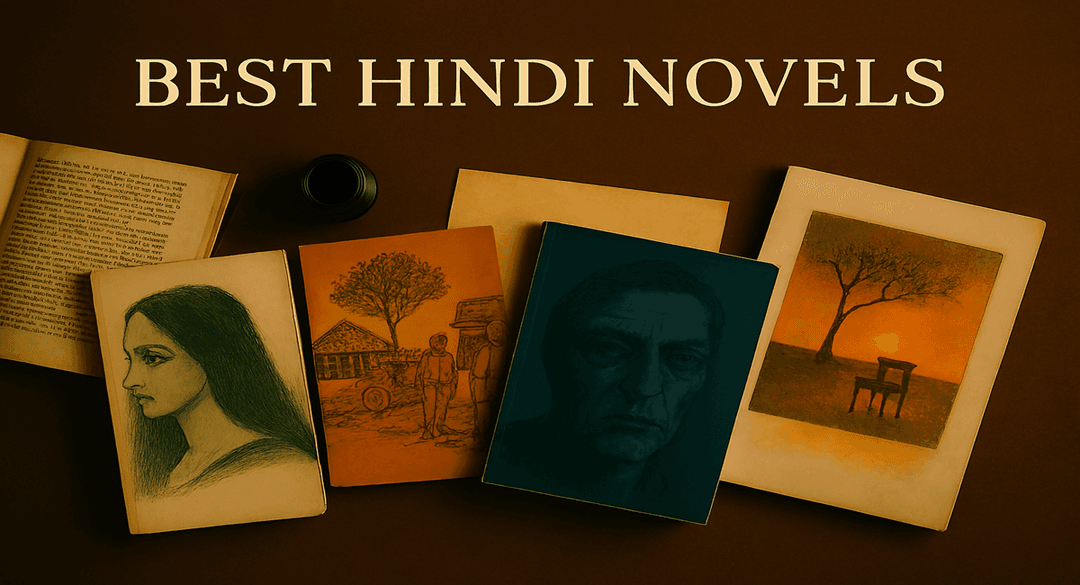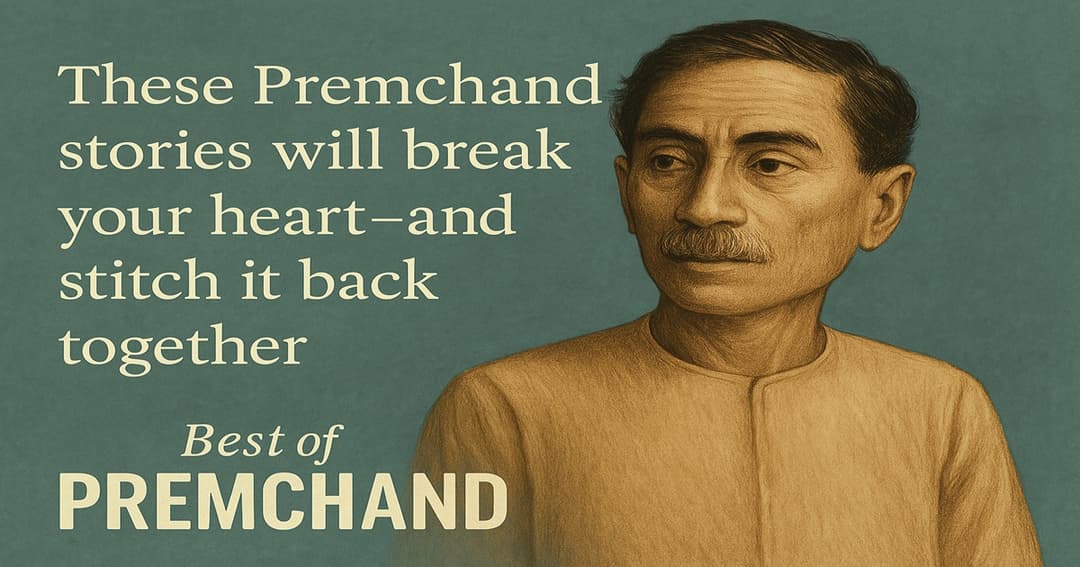Indian literature stands as one of the world's oldest and most diverse literary traditions, spanning over 3,000 years of continuous cultural expression. From ancient Sanskrit epics to contemporary multilingual novels, the subcontinent's literary heritage encompasses a vast array of languages, themes, and storytelling techniques that continue to captivate readers worldwide.
Ancient Foundations: The Roots of Indian Literary Tradition
The Vedic Period and Sacred Texts
Indian literature begins with the Vedas, composed between 1500-500 BCE, which represent some of humanity's earliest philosophical and spiritual writings. These sacred texts, including the Rigveda, Samaveda, Yajurveda, and Atharvaveda, established fundamental themes that would permeate Indian literature for millennia: the relationship between humans and the divine, the nature of existence, and the pursuit of truth.
The Upanishads, philosophical treatises that emerged from Vedic tradition, introduced complex concepts of consciousness, reality, and spiritual liberation that would influence not only Indian thought but also global philosophy. These texts demonstrate the sophisticated metaphysical thinking that characterizes much of Indian literature.
Epic Literature: Timeless Stories of Human Experience
The two great Sanskrit epics, the Mahabharata and the Ramayana, remain cornerstones of Indian literature and culture. The Mahabharata, traditionally attributed to sage Vyasa, encompasses over 100,000 verses and contains the famous Bhagavad Gita, a philosophical dialogue that explores duty, righteousness, and spiritual wisdom.
The Ramayana, composed by Valmiki, tells the story of Prince Rama's quest to rescue his wife Sita, weaving together themes of love, loyalty, honor, and the triumph of good over evil. These epics continue to inspire countless adaptations, translations, and reinterpretations across various media and languages.
Classical Sanskrit Literature: The Golden Age
Kalidasa and Poetic Excellence
The classical period of Sanskrit literature reached its zenith with poets like Kalidasa (4th-5th century CE), often called the "Shakespeare of India." His works, including "Meghaduta" (The Cloud Messenger) and "Shakuntala," demonstrate unparalleled lyrical beauty and emotional depth. Kalidasa's ability to blend human emotions with natural imagery established him as the master of Sanskrit poetry and drama.
Drama and Theater Traditions
Sanskrit drama, with its sophisticated theories of aesthetics and emotion (rasa theory), produced masterpieces like Bharata's "Natyashastra," a comprehensive treatise on performing arts. Playwrights such as Bhasa, Shudraka, and Bhavabhuti created works that explored complex human relationships and moral dilemmas through compelling theatrical narratives.
Regional Literature: Voices from Across the Subcontinent
Tamil Literature: The Sangam Tradition
Tamil literature boasts one of the world's longest continuous literary traditions. The Sangam literature (300 BCE - 300 CE) includes the Tolkappiyam, Ettuthokai, and Pattuppattu, which showcase sophisticated poetic techniques and deep insights into human nature. Later works like Thiruvalluvar's "Thirukkural" present timeless ethical teachings that remain relevant today.
Bengali Literature: The Renaissance Spirit
Bengali literature experienced a remarkable renaissance in the 19th and 20th centuries. Rabindranath Tagore, the first non-European Nobel Prize winner in Literature, revolutionized Bengali poetry, fiction, and drama. His works, including "Gitanjali" and numerous novels and short stories, blend Eastern spirituality with Western literary techniques.
Other luminaries like Bankim Chandra Chattopadhyay, Sarat Chandra Chattopadhyay, and Bibhutibhushan Bandopadhyay enriched Bengali literature with their explorations of social issues, human relationships, and the changing landscape of colonial and post-colonial India.
Hindi Literature: From Medieval Devotion to Modern Expression
Hindi literature encompasses various periods and movements. The Bhakti movement produced devotional poets like Kabir, Surdas, and Tulsidas, whose works continue to resonate with millions. Tulsidas's "Ramcharitmanas" remains one of the most beloved works in Hindi literature.
The modern period brought writers like Munshi Premchand, considered the father of modern Hindi literature, whose realistic portrayals of rural life and social issues established new standards for Hindi fiction. Contemporary Hindi writers like Krishna Sobti, Nirmal Verma, and Uday Prakash have continued to push literary boundaries.
Modern Indian Literature: Diverse Voices and Global Recognition
Post-Independence Literary Movements
The partition of India in 1947 profoundly impacted Indian literature, leading to powerful works exploring themes of displacement, identity, and cultural transformation. Writers across languages began examining the complexities of newly independent nations grappling with tradition and modernity.
Contemporary Authors and International Acclaim
Modern Indian literature has gained significant international recognition through writers like Salman Rushdie, whose magical realism in "Midnight's Children" redefined postcolonial literature. Arundhati Roy's "The God of Small Things" and Kiran Desai's "The Inheritance of Loss" have won prestigious international awards, bringing Indian storytelling to global audiences.
Authors writing in regional languages have also gained recognition through translations. U.R. Ananthamurthy (Kannada), O.V. Vijayan (Malayalam), Ismat Chughtai (Urdu), and Mahasweta Devi (Bengali) have contributed significantly to India's literary diversity.
Regional Language Literature: The Multilingual Mosaic
Marathi Literature: Social Reform and Artistic Innovation
Marathi literature has produced influential social reformers and literary artists. Writers like Jyotirao Phule and Dr. B.R. Ambedkar used literature as a tool for social change, while poets like Keshavsut and novelists like Hari Narayan Apte enriched the language's literary tradition.
Telugu Literature: Classical Elegance and Modern Vigor
Telugu literature combines classical sophistication with contemporary relevance. The works of Nannaya, Tikkana, and Yerrapragada in translating and adapting the Mahabharata established Telugu's literary credentials. Modern writers like Viswanatha Satyanarayana and Sri Sri have continued this tradition with innovative approaches to poetry and prose.
Urdu Literature: Poetic Splendor and Cultural Synthesis
Urdu literature represents a unique synthesis of Persian, Arabic, and Indian cultural elements. Poets like Mirza Ghalib, Allama Iqbal, and Faiz Ahmed Faiz created verses of extraordinary beauty and philosophical depth. The tradition of ghazal and nazm continues to flourish through contemporary poets and performers.
Themes and Characteristics of Indian Literature
Spiritual and Philosophical Depth
Indian literature consistently explores profound spiritual and philosophical questions about the nature of existence, the purpose of life, and the relationship between individual and universal consciousness. This spiritual dimension distinguishes much of Indian writing from purely secular literary traditions.
Social Commentary and Reform
Throughout its history, Indian literature has served as a vehicle for social commentary and reform. From ancient texts questioning rigid social hierarchies to contemporary works addressing gender equality, caste discrimination, and economic inequality, Indian writers have consistently used their craft to promote social progress.
Rich Storytelling Traditions
The oral storytelling traditions of India have profoundly influenced its written literature. The use of frame narratives, embedded stories, and cyclical structures reflects the culture's deep appreciation for the art of storytelling itself.
Contemporary Challenges and Opportunities
Digital Age Transformations
The digital revolution has transformed how Indian literature is created, distributed, and consumed. Online platforms, e-books, and social media have democratized literary expression, allowing emerging voices to reach audiences without traditional gatekeepers.
Translation and Accessibility
Increased translation efforts have made regional literature more accessible to wider audiences. Organizations and publishers are investing in high-quality translations, helping preserve and promote India's linguistic diversity while making these works available to global readers.
Emerging Voices and New Genres
Contemporary Indian literature embraces diverse genres including science fiction, fantasy, graphic novels, and experimental fiction. Young writers are exploring themes of urbanization, technology, environmental concerns, and globalization while maintaining connections to traditional storytelling methods.
The Global Impact of Indian Literature
International Recognition and Awards
Indian authors have received numerous international accolades, including Nobel Prizes, Booker Prizes, and other prestigious awards. This recognition has elevated the profile of Indian literature globally and encouraged more translations and cross-cultural literary exchanges.
Influence on World Literature
The themes, techniques, and perspectives of Indian literature have influenced writers worldwide. Concepts from Indian philosophy, narrative structures from epic traditions, and the postcolonial experience have enriched global literary discourse.
Preserving and Promoting Literary Heritage
Digital Archives and Preservation
Efforts to digitize ancient manuscripts and rare texts ensure that India's literary heritage remains accessible to future generations. Universities, libraries, and cultural institutions are collaborating on preservation projects that safeguard invaluable literary treasures.
Educational Initiatives
Educational programs promoting multilingual literacy and appreciation for regional literature help maintain India's diverse literary traditions. Schools and universities are incorporating more Indian literature into their curricula, fostering deeper cultural understanding among students.
Conclusion: The Enduring Legacy of Indian Literature
Indian literature represents one of humanity's most remarkable continuous literary traditions, offering profound insights into the human condition while celebrating the rich diversity of the subcontinent's cultures and languages. From ancient Sanskrit verses to contemporary experimental fiction, this tradition continues to evolve while maintaining its essential character.
The future of Indian literature appears bright, with new voices emerging across languages and genres, digital platforms expanding access and audience, and international recognition continuing to grow. As India navigates the complexities of the 21st century, its literature serves as both a repository of wisdom and a compass for the future, ensuring that the rich tapestry of Indian storytelling will continue to inspire and enlighten readers around the world.
The enduring appeal of Indian literature lies in its ability to combine universal human themes with distinctly Indian perspectives, creating works that speak to readers across cultural and linguistic boundaries while preserving the unique flavors of regional traditions. This balance between universality and particularity ensures that Indian literature will remain vital and relevant for generations to come.




